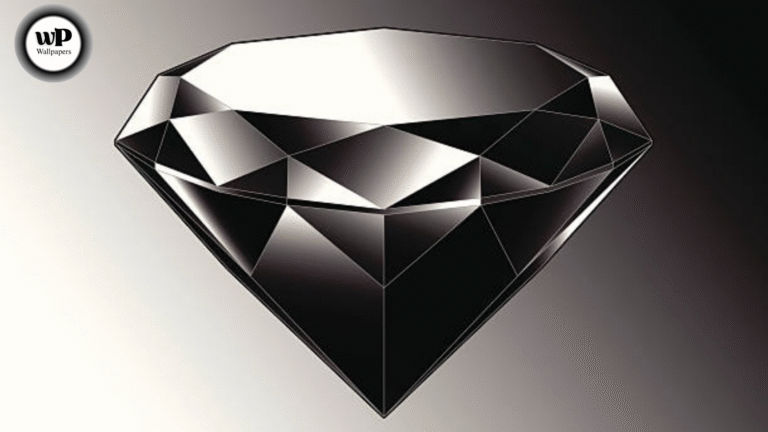Weaving loom loops refill crafts have become a beloved hobby for many people, from beginners to experienced crafters. The beauty of creating intricate designs, whether it’s a bracelet, a keychain, or even a scarf, lies in the materials used. Weaving loom loop refills are a crucial part of the equation when it comes to loom weaving. Without the right refill, the success of your project can quickly diminish, and the weaving process may become more frustrating than enjoyable.
In this comprehensive guide, we will dive into everything you need to know about weaving loom loop refills, from the different types of refills to how to choose the best one for your project. We will also discuss where to buy them, how to use them properly in your designs, and answer some frequently asked questions that may arise as you begin your weaving journey.
This guide will not only provide the information you need but also offer tips, tricks, and insights that will make your weaving loom experiences smoother and more enjoyable.
What Are Weaving Loom Loops Refill?
Understanding Loom Loops
Loom loops are essentially the elastic bands used in various loom weaving projects. These loops are typically made of rubber, cotton, or synthetic materials and come in a wide range of sizes, colors, and textures. They are used to create woven patterns on a loom by being placed on the loom pegs in specific patterns.
While it may seem simple, the type of loom loop you choose can drastically impact the look and feel of your finished project. Loom loops are a versatile material, allowing you to create everything from small, detailed designs like bracelets and keychains to larger items like bags and blankets.
The loops work by stretching over the pegs of the loom, and through the weaving process, they interlace and create a tightly woven fabric. The beauty of weaving with loom loops is that it’s an accessible craft for people of all skill levels and can be as intricate or simple as you like.
Types of Loom Loops
Loom loops come in several variations, each offering distinct benefits based on the type of project you’re working on. Let’s break down the most common types of loops you’ll encounter:
- Elastic Loom Loops: These are the most common type of loom loops. They’re made from a stretchy material, which makes them perfect for creating smaller, detailed projects like bracelets and keychains. Elastic loops also tend to be more forgiving for beginners since they are flexible and easier to manipulate.
- Cotton Loom Loops: If you’re looking for something more durable and sturdy, cotton loops are a great option. They provide a thicker, more rigid structure, which can be perfect for larger projects, such as scarves or bags, where you want the fabric to hold its shape.
- Glow-in-the-Dark Loom Loops: For fun and creative projects, glow-in-the-dark loom loops are a fantastic choice. These loops absorb light during the day and then emit a soft glow at night, adding an exciting dimension to your woven creations. They are especially popular for kids’ crafts or Halloween-themed projects.
- Metallic Loom Loops: Want to add a little sparkle to your woven creations? Metallic loom loops are perfect for creating projects with a shimmering effect. Whether you’re making jewelry, decorative pieces, or even fashion accessories, these loops bring a touch of glamour and elegance.
Each type of loom loop offers its unique advantages, so choosing the right type depends on your project’s requirements and your personal preferences.
How to Choose the Best Weaving Loom Loops Refill for Your Project
Choosing the right weaving loom loop refill is key to ensuring your project turns out exactly as you envision. With so many options available, it can be overwhelming to decide which one to pick. Here are some key factors to keep in mind:
1. Material Matters
The material of the loom loops is one of the most important considerations. Different materials provide varying levels of elasticity, strength, and texture. For example, elastic loom loops are highly flexible, making them great for beginners or simple projects, while cotton loom loops are sturdier and better for long-lasting items or more intricate designs. Metallic and glow-in-the-dark loops offer a unique flair, but they might not be as durable as their elastic or cotton counterparts.
2. Color Selection and Variety
When it comes to weaving projects, color is everything. Loom loops come in every color of the rainbow, and you can even find them in unique shades or multi-colored sets. Choosing the right color can be crucial to achieving the desired aesthetic for your project. For example, if you’re making a gift for someone, you might want to select their favorite colors or choose something that fits a specific theme. Tip: Always select colors that contrast well against each other to make the patterns pop, and be mindful of the project’s overall tone.
3. Size of Loom Loops
The size of the loom loops you choose will directly impact the finished size of your woven fabric. Smaller loops work well for detailed and tight designs, while larger loops create a thicker and coarser fabric. If you want to create a more compact, intricate design like a bracelet, smaller loops are your best bet. For a large, fluffy scarf or blanket, larger loops will create a sturdier, more substantial fabric.
4. Quantity of Loom Loops
Loom loops come in varying quantities, from small packs of 100 loops to bulk quantities of 1,000 or more. For smaller projects like keychains or bracelets, a small pack will suffice. However, if you’re planning on making multiple items or larger pieces like blankets, purchasing in bulk can save you money in the long run.
5. Brand and Quality
Not all loom loops are created equal. While it might be tempting to go for the cheapest option, quality matters. Cheap, low-quality loops can easily snap or lose their elasticity after a few uses, which can lead to frustration. Opting for well-known, reputable brands ensures that you’re getting high-quality, durable loops that will withstand the rigors of weaving and produce better results in the end.
Where to Buy Weaving Loom Loops Refill
When you’re ready to buy your weaving loom loops refill, there are several places where you can find the best deals and widest selection. Here are some options to consider:
1. Online Craft Stores
Websites like Amazon, Etsy, and specialized online craft stores offer a huge variety of loom loops. Shopping online gives you access to a wide selection, and you can compare prices easily. Additionally, online stores often carry more specialty items like glow-in-the-dark or metallic loom loops that may not be available in physical stores.
2. Local Craft Stores
If you prefer to see and feel the product before buying it, visiting a local craft store is a great option. Stores like Michaels, Joann Fabrics, and Hobby Lobby have extensive craft supplies and often carry loom loops in different colors and sizes. Plus, if you need to start your project right away, this can be the quickest way to get your supplies.
3. Wholesale Suppliers
For those who are avid weavers or run their craft businesses, buying from wholesale suppliers can be a cost-effective solution. Wholesale platforms or distributors often sell loom loops in bulk at discounted prices. While this is perfect for large projects or frequent crafting, you’ll need to be mindful of the quantity you purchase.
How to Use Weaving Loom Loops Refill in Your Projects
Once you’ve picked the perfect weaving loom loop refill, it’s time to dive into your project! Here’s a step-by-step guide on how to properly use loom loops to create your masterpiece.
- Set Up Your Loom:
Before you begin weaving, set up your loom according to the project you’re working on. Ensure the pegs are evenly spaced and securely fastened. If you’re using a small loom, such as for bracelets, ensure it’s stable so the loops don’t fall off during the weaving process. - Choose Your Loom Loops:
Select the color and size of loops you want to use. Remember that some designs might require you to change colors as you weave. Have your loops ready in separate piles for easy access. - Place Loops on the Loom:
Start by placing the loops over the loom pegs. Depending on your design, this may involve using multiple colors or just one. For simple projects, a single-color loop may be all you need. - Begin Weaving:
With your loom set up and loops placed, begin weaving the loops back and forth, alternating between rows. Pull the loops tight but not too tight, as this can distort the fabric and make it harder to work with. - Finish and Remove from Loom:
Once you’ve completed your design, carefully remove the woven piece from the loom. Be sure to tie off the ends securely to prevent the project from unraveling.
FAQs
Q1: Can I use any loom loops for my projects?
Not all loom loops are compatible with every loom. It’s essential to check the loom size and loop type recommended for your project to ensure a perfect fit. Using the wrong size or material can cause issues during weaving.
Q2: How long will my loom loops last?
The lifespan of loom loops depends on their material and the frequency of use. Generally, elastic loops are more prone to stretching out over time, while cotton and metallic loops tend to last longer, especially with careful handling.
Q3: Can I use loom loops for non-weaving projects?
Yes, loom loops can be used for many other crafts, including jewelry-making, home décor, and kids’ crafts. They’re highly versatile and can add a creative touch to almost any DIY project.
Q4: How can I make my loom loops last longer?
To extend the lifespan of your loom loops, always store them in a cool, dry place. Avoid exposing them to sunlight or heat for prolonged periods, as this can cause the loops to become brittle and lose elasticity.
Conclusion
Whether you’re new to weaving or have been crafting for years, choosing the right weaving loom loop refill is essential for achieving the best results. With a wide variety of materials, colors, and sizes available, there’s no shortage of options to fit every project. By understanding the different types of loom loops, how to choose the best ones, and where to find them, you can ensure that your weaving projects turn out beautifully and last for years to come. Happy weaving!



